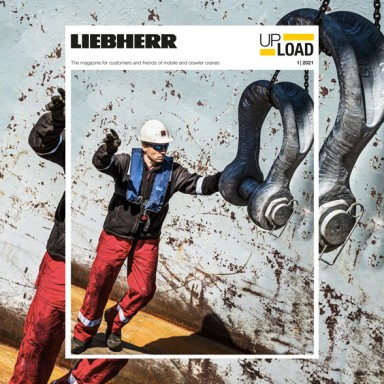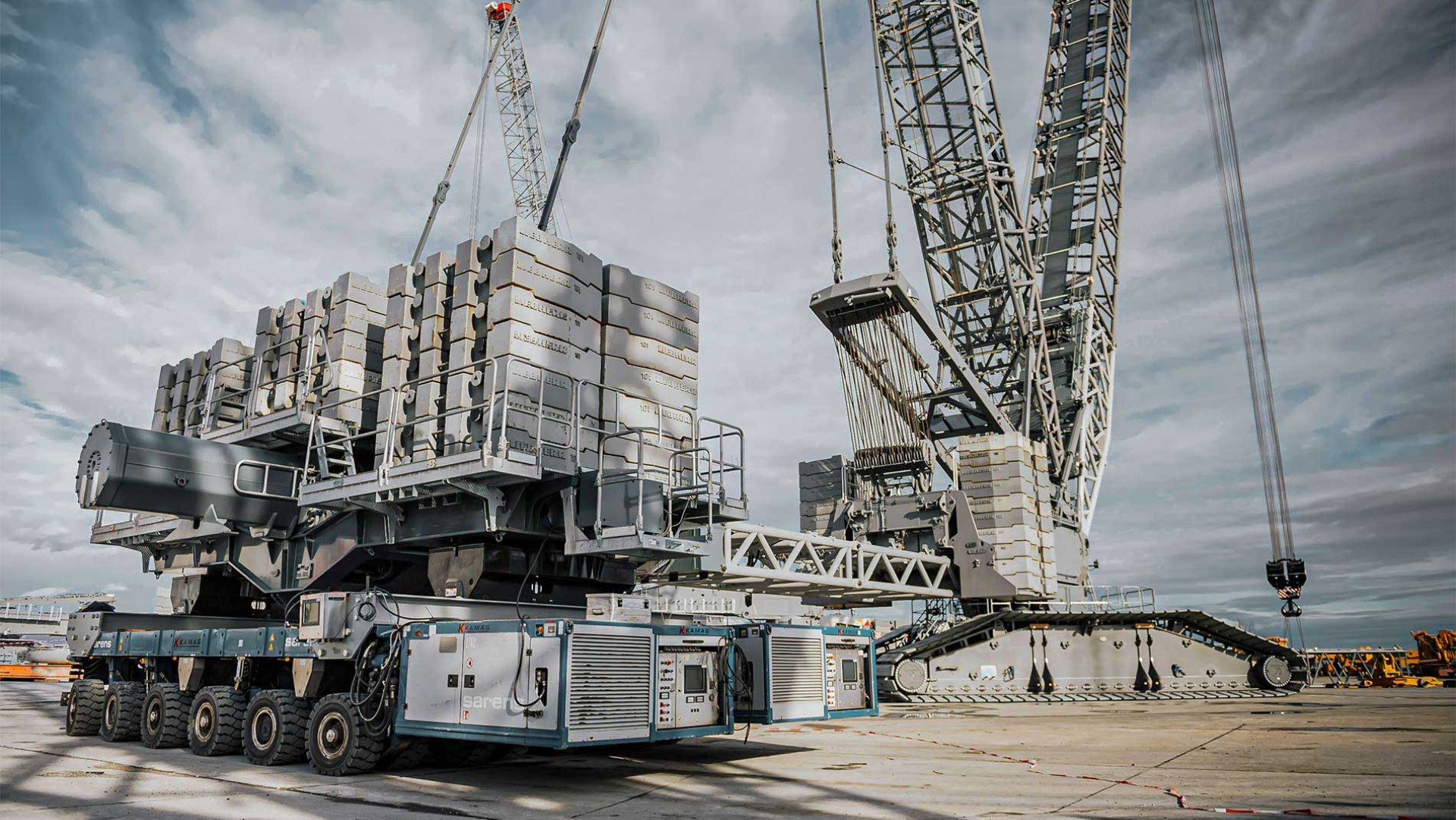
5 minutes | magazine 01/2021
How did the ballast trailer come to be and where are we going with it?
Crawler cranes are a common sight on large building sites. As they are typically used for heavy hoists, large quantities of ballast are required to act as counterweights. A wide range of ballast types is available, depending on the specific job – slewing platform ballast, derrick ballast, suspended ballast, V-frame – or a ballast trailer. Jens Könneker, Product Manager Lattice Boom Cranes, explains the origin of the ballast trailer and takes a look at its future.
How did one come up with the idea of designing a ballast trailer in the first place? When we use crawler cranes we are often faced with the problem of requiring a great deal of ballast for a hoist. If we look at a shipyard, for example, where a crane often has to perform heavy hoists at several locations, and it requires lots of ballast for each one. It travels between the hoists without a load on its hook to the next location.

Jens Könneker, Product Manager Lattice Boom Cranes
It would then have to stack and unstack the ballast, which would require a great deal of time. This is where the ballast trailer is the perfect tool. The concept behind the trailer is to enable a crawler crane to move with ballast, regardless of whether it has a load on the hook or not. The crane always takes as much ballast as it requires for the current job. This makes working with the crane faster and more efficient. It also means that there is no need for an auxiliary crane for the reballasting work. A second point behind the concept is that space is often extremely limited, for example at refineries. Generally, there is simply not enough space for the ballasting process. Once again, in this situation, the ballast trailer can be beneficial as it can simply be attached to the crane. This also has a technical benefit as the ballast trailer relieves the strain on the slewing platform and undercarriage since no force is placed on them.
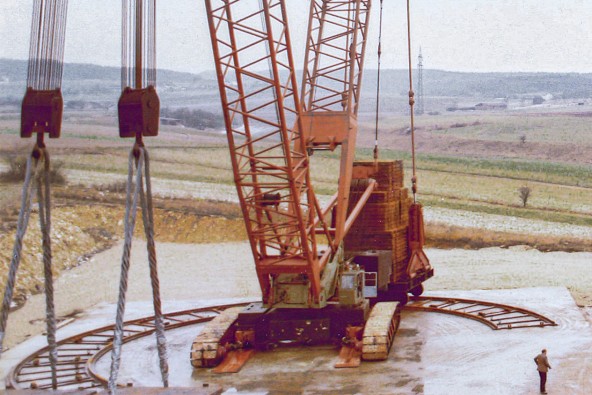
Ballast trailer development at a glance – first on rails, ...
When did the first ballast trailer appear? It was built on rails back in the 70s. At first, it was only able to circle, which meant that the crane could only operate in stationary form and slew. The first ballast trailer on tyres was designed and commissioned in the 80s. Initially, particularly, they were often overloaded to provide additional safety. Nevertheless, they presented a simple way of increasing the lifting capacity of existing cranes. Ballast trailers were designed specifically for LR 1400, LR 1550 and LR 1650 crane models, with the work at the time being carried out by partner companies.
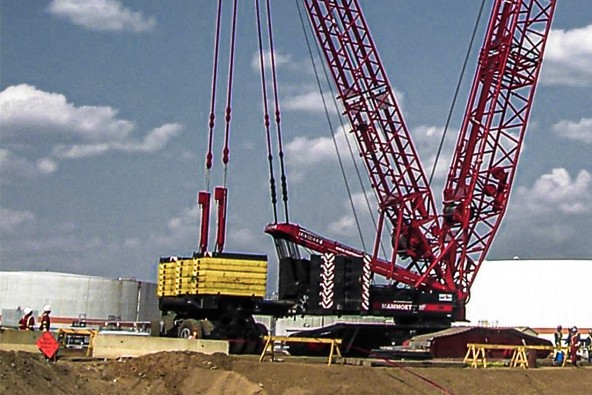
... then on tyres.
The next phase of development was the first ballast trailer featuring the LICCON1 control system. However, it did not have a drive unit. That meant that an additional slewing gear had to be installed on the crane. It was not until later that the trailer was fitted with its own drive unit, with the first one being designed for the LR 1750. If necessary, the drive unit could be activated to provide assistance as a start-up drive. But at the time, that was the limit of its performance. The LICCON2 ballast trailer, designed for the LR 11000, then revolutionised this situation. It was the first ballast trailer with a high-end control system which tracked the movements of the crane – based on the proportional hydraulic control system used on the travel drive system. This meant that circling, driving in parallel and towing was easily possible, with it being controlled from the crane cab or using a control desk.
Again and again we received requests from our customers to enable the ballast trailer to be used for multiple crane models. As the trailers are used pretty rarely, this would produce significant cost savings. The first time we made it possible to switch a ballast trailer between two crane models involved the LR 1600/2 and the LR 1750/2. During the last year, we have managed to design a new ballast trailer for three crane models – the M-Wagon, which features lots of standard parts. It can be used with the new LR 1700-1.0, the LR 1800-1.0 and the LR 11000. Naturally, it features the sensitive LICCON2 control system.
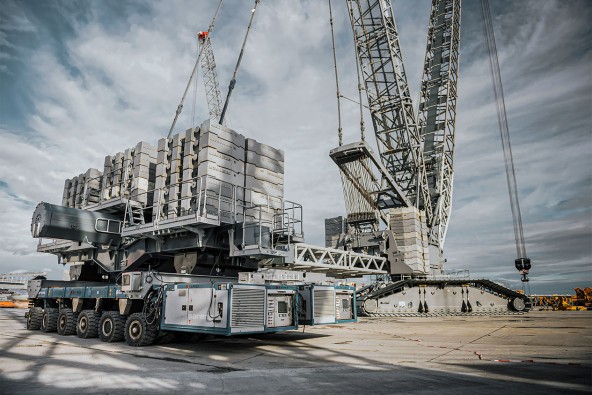
The future – a ballast trailer with an SPMT acting as the undercarriage.
However, this is not the end of the development of the ballast trailer system and it is very worthwhile taking a look at the future. We are currently working on a system which will enable us to connect conventional SPMTs to a crane. As SPMTs are available all over the world, this will make it easy to build a ballast trailer. The SPMTs will be integrated into the crane’s mechanical and control systems. At the moment, this development work is still in its infancy, but already it is looking extremely promising.
Perhaps we should provide one final detail as we are asked the question all the time – the tyres on a ballast trailer are not inflated only with air any longer, but instead are filled with polyurethane foam. This reduces flattening and significantly enhances safety. A tyre filled with air can burst which, in an extreme case, can result in the entire ballast trailer collapsing. The explosion of a tyre with such a large volume and pressure would be extremely dangerous. However, this cannot happen on a tyre filled with polyurethane foam.
This article was published in the UpLoad magazine 01 | 2021.

